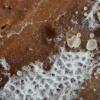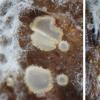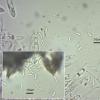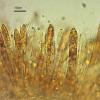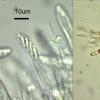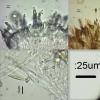
10-01-2026 01:18
 Danny Newman
Danny Newman
cf. Neovaginatispora fuckelii on indet. shrub Pre

07-01-2026 10:24
 Danny Newman
Danny Newman
Pezicula sp. on indet. hardwood Appalachian Highl

09-01-2026 17:41
Arnold BüschlenHallo, F. dilatata wird von vielen Bryoparasiten

09-01-2026 10:08
 Blasco Rafael
Blasco Rafael
Hola, en el mismo habitat que la anteriorRetamaDia

08-01-2026 21:22
 Blasco Rafael
Blasco Rafael
Hola, He recogido esta muestra de Orbilia sobre Re

07-01-2026 22:22
 Danny Newman
Danny Newman
Tatraea sp. on indet. hardwood The Swag, Great Sm

07-01-2026 17:29
 Marc Detollenaere
Marc Detollenaere
Dear Forum,On a barkless Populus I found some smal

10-11-2021 17:33
 Riet van Oosten
Riet van Oosten
Add-on topic http://www.ascofrance.com/forum/7059

07-01-2026 10:05
 Danny Newman
Danny Newman
cf. Chaetospermum on XylariaCosby Campground, Grea
Hyaloscypha auriella
Steve Clements,
21-07-2016 11:00
Nous avons trouvé cet disco sur un rondin de pin, avec le basidio Trechispora mollusca. Il est tres beau!
We found this tiny disco on a pine log growing with the basidiomycete resupinate fungus Trechispora mollusca. It was sessile, up to 6mm diameter. The most striking feature were the bright yellow tips to the hairs. These were difficult to see in a liquid mount as the encrustation tended to disperse. The hairs seem to be covered in droplets rather than crystals. From Peter Thompson's "Ascomycetes in Colour" I considered Hyaloscypha auriella, as the droplets could perhaps be what he describes as "pieces of resin". The hairs were however rather longer than he says, being over 50 um long. They were pointed.
Spores were slighly curved, 8-11 x 2.5, hyaline, no obvious guttules noted.
Asci were typically 45 x 7, biseriate, non-operculate, blueing in Lugol.
Paraphyses were thread-like, 1.5 wide.
Cordialement,
Steve
Hans-Otto Baral,
21-07-2016 11:33

Re : Hyaloscypha auriella
Yes, it is very typical H. aureliella. Indeed, the yellow substance is currently referred to as resinous. If you add Cresyl Blue this exudate stains turquoise, while in KOH it disappears/dissolves.
If you have these reagents please check.
I compared this exudate with that in Orbilia, which is very different in that it is inert to KOH. CRB gives a blue stain too, phloxin a bright pink stain, and Congo Red stains it red. The latter two reagents I never tested with this Hyaloscypha resin.
Zotto
If you have these reagents please check.
I compared this exudate with that in Orbilia, which is very different in that it is inert to KOH. CRB gives a blue stain too, phloxin a bright pink stain, and Congo Red stains it red. The latter two reagents I never tested with this Hyaloscypha resin.
Zotto
Steve Clements,
21-07-2016 20:38
Re : Hyaloscypha auriella
Thank you very much Zotto,
The pictures in Peter Thompson's book are not very good so I was very unsure - but it is still an excellent resource.
I have Cresyl Blue and KOH (as I have inherited a large collection of reagents),
With best regards,
Steve
The pictures in Peter Thompson's book are not very good so I was very unsure - but it is still an excellent resource.
I have Cresyl Blue and KOH (as I have inherited a large collection of reagents),
With best regards,
Steve

